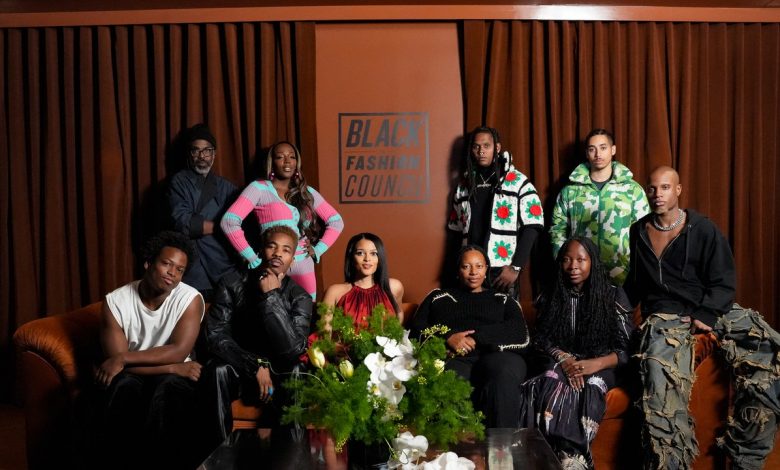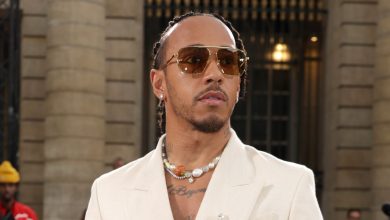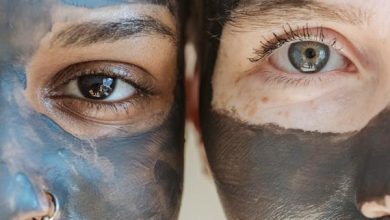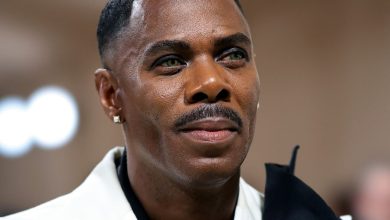10 Seasons In, the Black in Fashion Council Discovery Showroom Continues to Transform the Industry

On the surface, one could surmise that things have shifted for the better in the fashion industry for Black creatives in the last few seasons. We’ve seen a massive influx of private investment into small businesses, 28 major retailers signed onto the Fifteen Percent Pledge to stock-list Black-owned brands, and history was made when Maximilian Davis and Pharrell Williams were appointed as the first Black creative directors for their respective fashion houses, Ferragamo and Louis Vuitton. But still, given the current political climate, it’s clear for many that the work has only just begun—at least that was our consensus after chatting with designers at the Black in Fashion Council’s Fall 2025 Discovery Showroom.
Despite ongoing discussions around the importance of diversity in fashion, the industry itself is still largely exclusionary. Only 7% to 10% of small fashion businesses are Black owned; of that slim margin, only 1% is currently sold in major retailers. If that weren’t emblematic enough of a systemic imbalance, one only needs to look at who is appointed to the lofty positions in major luxury fashion houses to notice the lack of actual change. As reported by Vogue Business, only eight women and four people of color currently hold creative director roles at the major luxury fashion houses, none of which is held by a Black woman. That staggering reality was something that came up at this season’s showroom as designer Nia Thomas admitted, “There’s not a lot of examples for me to look up to as an African American woman working in the luxury fashion industry in the United States, so I’ve come to accept that maybe I have to break down some of those barriers myself.”
It wasn’t just one designer who voiced this concern, as even a late-night call with Rene Moshi Macdonald of Lisou led her to question why a major fashion house has yet to name a Black woman to a creative director post. “What the hell is that all about?” she asked. For all of the perceived “progression” that occurred the past few years, it’s become clear to many Black creatives that the only way forward isn’t to continue asking for a seat at the table but to build their own spaces from the jump. One could argue that perspective has been the guiding principle behind why Sandrine Charles and Lindsay Peoples started the Black in Fashion Council. While other organizations have floundered to create such a space in the existing ecosystem, the Council has flourished by creating its own. Over the past five years, the organization has given a platform to more than 75 designers from across the globe, including Diotima, Theophilio, and House of Aama. While its longevity is worth celebrating—which was done so with a dinner party—it’s not lost on the founders that there’s still more work to do in the industry.
“We are thrilled to reach the milestone of 10 seasons hosting the Black in Fashion Council Discovery Showroom, but our goal moving forward is to continue to evolve the showroom efforts, the designer footprint, and the overall experience,” Charles told Vogue at the fall 2025 presentation. While systemic change in the broader fashion industry will no doubt take time to achieve, the showcase has been a conduit for building community. Whether hailing from the shores of Haiti or a few stops into the borough of Brooklyn, creatives have come together consecutively to create meaningful relationships at the Council. It’s that connection that compelled Vogue to shuffle through the snow down to Manhattan’s Financial District on a particularly frigid afternoon during New York Fashion Week to interview each of them. Ahead, the 10 designers discuss their labels, what the showcase means to them, and their vision for the future of fashion.
Nia Thomas
Nia ThomasMiguel McSongwe/BFA.com




